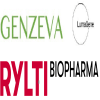Patients with Alzheimer’s disease may have another treatment option in the not-too-distant future, as newly released data appear to support a more convenient version of the closely watched medicine Leqembi.
Developed by partners Eisai and Biogen, Leqembi is the only Alzheimer’s medicine of its type with a full approval from the Food and Drug Administration. It’s specifically for patients in the early stages of the disease, and is given as an hourlong, intravenous infusion once every two weeks.
Eisai and Biogen have been testing whether a different form of Leqembi, an under-the-skin injection, can be as safe and effective as the already marketed version. On Wednesday, at a medical conference in Boston, researchers presented results from a study of nearly 400 participants that suggests the two forms are roughly comparable.
This study, known as an “open-label extension,” is a later phase of the clinical trial that initially led to Leqembi’s approval. It enrolled 394 patients, of whom 322 had previously received Leqembi while the remaining 72 had not.
Leqembi is meant to slow the progression of Alzheimer’s by removing buildups of a sticky, toxic protein known as amyloid beta. On that measure, researchers said that, after six months of treatment, the average reduction in amyloid was 14% higher with subcutaneous Leqembi compared to intravenous.
With the subcutaneous version, Eisai said there was a relatively low rate of reactions near the injection site, and almost no “systemic” reactions.
Amyloid-targeting drugs like Leqembi are also known to cause “ARIA,” a class of side effects characterized by swelling and micro-bleeding in the brain.
Almost 17% of those “treatment naive” patients experienced brain swelling after receiving subcutaneous Leqembi, while 22% experienced the bleeding. The rates are higher than those seen among the patients given intravenous Leqembi in the main part of the trial, but Eisai notes how these side effects happen most often in the months just after patients begin taking anti-amyloid therapies. The company maintains that the two forms of its drug have similar ARIA rates.
“We view these as comparable, given that the numbers are pretty small and it would be easy for one ARIA to swing those numbers substantially,” said Steve Hersch, vice president of clinical research, new modalities and the neurology business group in Eisai’s US division.

Eisai now plans to submit an approval application for subcutaneous Leqembi by the end of March, at which point the company will have 12-month data from its study. Should the FDA agree to a review, the new version could be cleared and on the market by early 2025.
Alex Scott, executive vice president of integrity at Eisai US, argues that an under-the-skin shot will be more favorable than an intravenous infusion for certain Alzheimer’s patients, particularly those who are earlier on in the disease and still quite active, or those who don’t live near infusion centers.
“Overall, they’re really interchangeable. But there’s certainly nothing to be lost by having subcutaneous as an option,” Scott said. “In fact, there are some benefits, obviously for convenience and for the waits for infusion centers.”
Hersch noted, too, the enthusiasm for subcutaneous Leqembi from investigators and patients in the study. He said not many participants have opted to switch back to the intravenous version. (The study administered Leqembi either through syringes or by two auto-injectors, which were used at the same time, once weekly.)
Eisai, as well as Wall Street analysts, also expect a subcutaneous formulation will help increase uptake and sales of Leqembi.
Brian Abrahams, an analyst at the investment firm RBC Capital Markets, wrote in a recent note to clients how bottlenecks that have hindered sales of anti-amyloid drugs — including screening and monitoring of patients — should mostly be alleviated by the time subcutaneous Leqembi could enter the market.
Abrahams and his team therefore estimate that FDA approval for a subcutaneous version would add more than $1 billion to Leqembi’s peak annual sales, which RBC has pegged at $10 billion.
Following Wednesday's data presentation, Paul Matteis, an analyst at Stifel, wrote that his team expects subcutaneous Leqembi will receive FDA approval, provided the new results can be "replicable and consistent in a larger sample." Salim Syed, of Mizuho Securities, also believes the formulation is likely to be cleared for market, and in turn increase "the prospects of overall Leqembi deeper commercial usage."
Editor’s note: This story has been updated with comments from analysts.





























